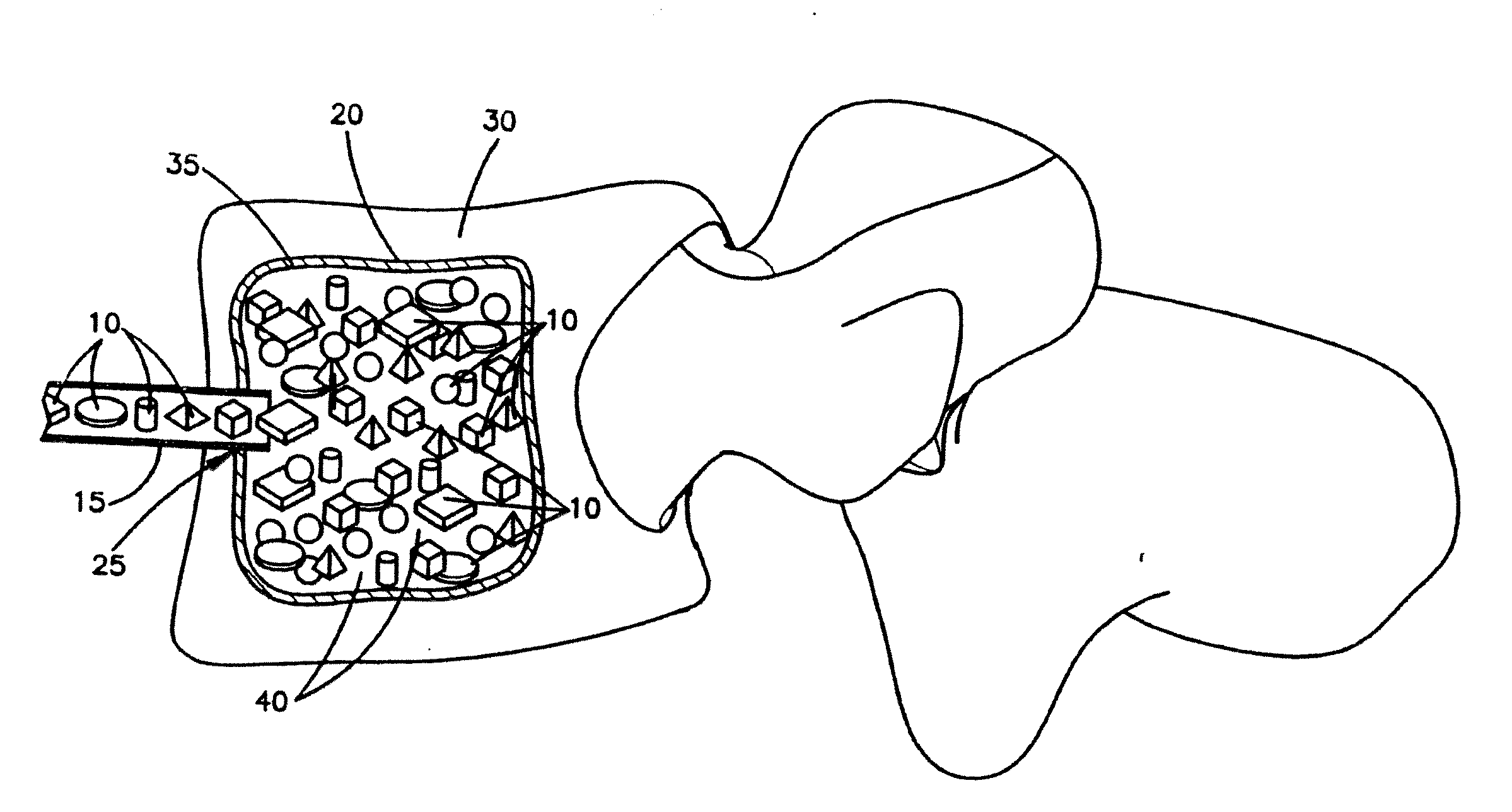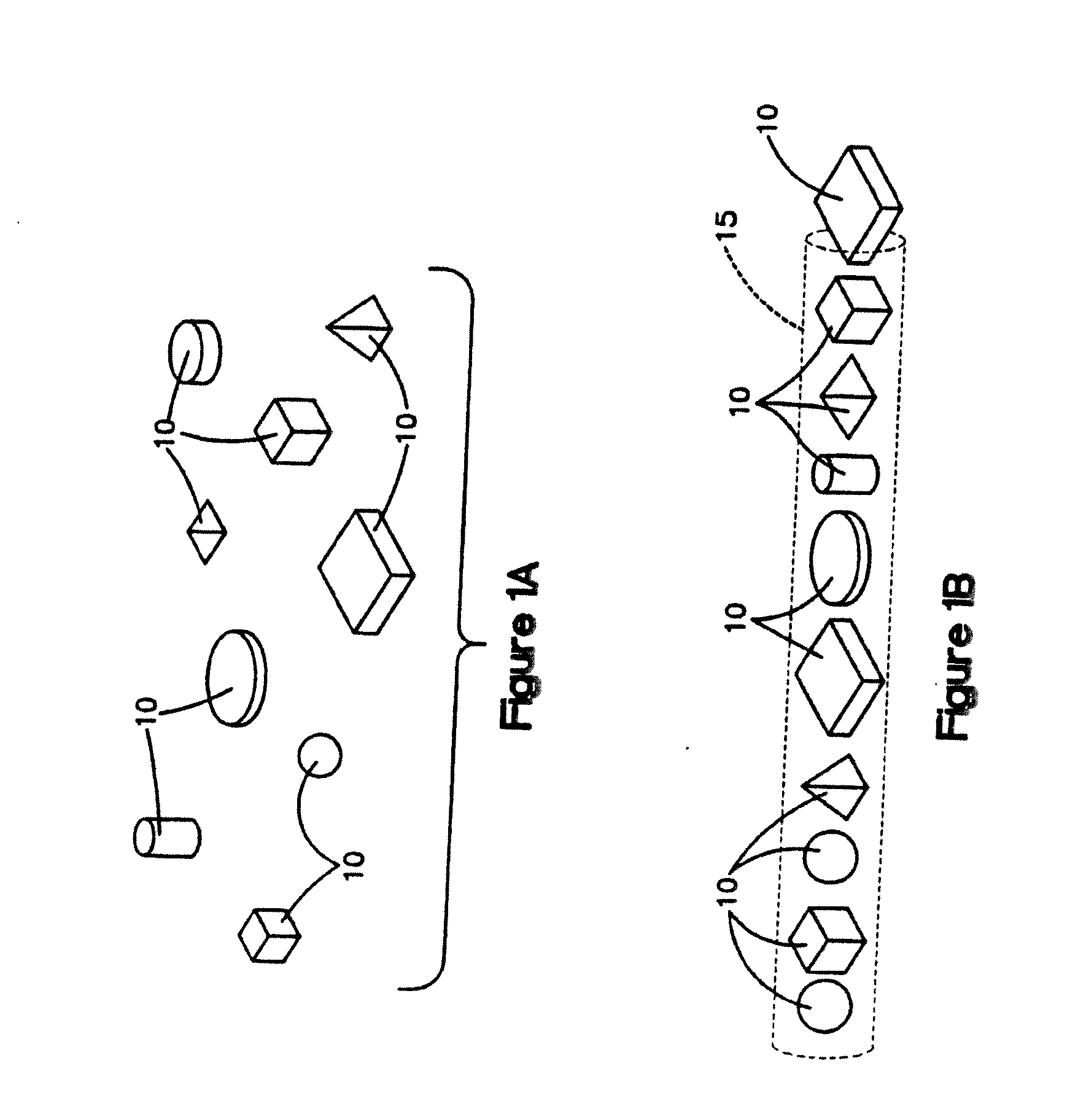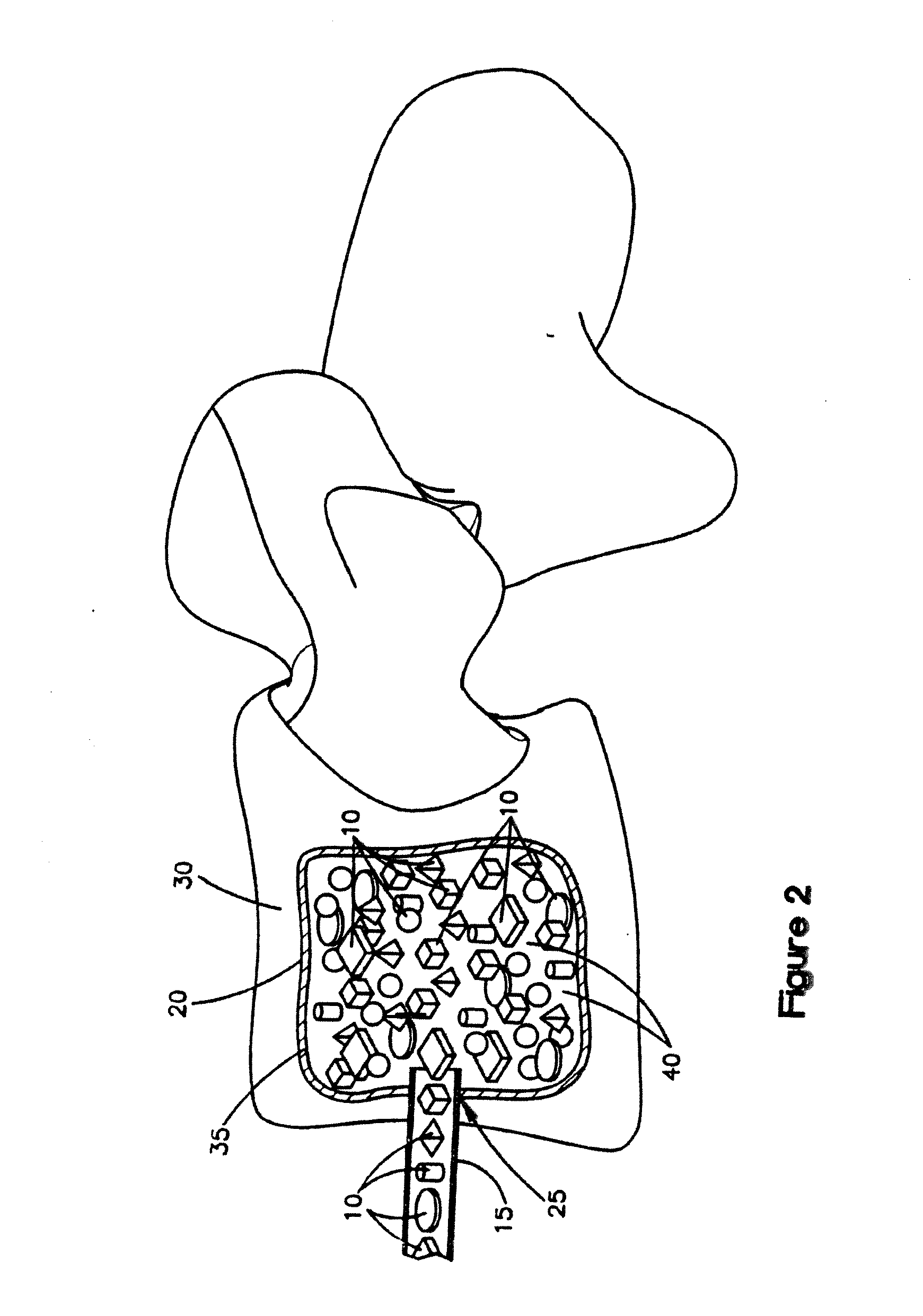Demineralized cortical bone implants
a cortical bone and bone implant technology, applied in the field of demineralized cortical bone implants, can solve the problems of inability to complete healing, pain and deformities, severe pain and deformities, etc., and achieve the effect of easy differentiation
- Summary
- Abstract
- Description
- Claims
- Application Information
AI Technical Summary
Benefits of technology
Problems solved by technology
Method used
Image
Examples
example 1
Preparation of Demineralized Cortical Bone Units
[0103]Fully demineralized cortical bone units were processed by cutting a long bone shaft into 2.4 mm thick cortical rings using a band saw. Lipids were then removed from the cortical rings using Tween 80 solution, cleaned using hydrogen peroxide, and then demineralized with an extended soak using 0.6N HCl to reach a residual calcium level below 0.5 wt %. The demineralized cortical rings were then cut into cubes with 2.4 mm sides. Afterwards, the pH was restored to physiological levels using a buffered salt solution. The demineralized cortical bone units was then soaked in ethanol, rinsed with water, and then lyophilized to a residual moisture content of less than 6 wt %.
example 2
Comparative Example—Preparation of a Composition of Non-Demineralized Corticocancellous Bone Granules, Demineralized Cortical Bone Powder and Sodium Hyaluronate
[0104]A mixture containing non-demineralized corticocancellous bone granules, demineralized cortical bone powder and sodium hyaluronate was produced as follows. Pieces of cortical and cancellous bone were cut into smaller pieces and delipidized using a surfactant solution. Subsequently, the cortical bone pieces and then the cancellous bone pieces were separately milled into granules with a size range of 212 μm to 850 μm. The cortical bone granules were then divided into two portions. The first portion was combined with cancellous granules in an 80:20 cortical to cancellous ratio by weight and then further cleaned with peroxide and ethanol. Following this step, the non-demineralized corticocancellous granules were lyophilized to a residual moisture content of less than 6 wt %. The second portion of cortical bone granules was u...
example 3
Comparative Packing Densities Required to Sustain Loads in Confined Compression
[0105]Sustained loading testing was performed to determine the comparative material packing or bulk densities of (1) the demineralized cortical bone units prepared as described in Example 1 above (“the test samples”), and (2) the composition prepared as described in Example 2 above (“the control samples”), which was a mixture of non-demineralized corticocancellous granules, DBM and sodium hyaluronate. A Bionix 858 Test System (MTS, Minneapolis, Minn.) was used to determine the packing densities.
[0106]For the test samples, aliquots of the lyophilized demineralized cortical bone units of Example 1 (0.6 g dry weight each) were re-hydrated in excess saline and then loaded into a porous confined compression chamber. The demineralized cortical bone units were in the shaped of cubes, in which each side was about 2.4 mm. The chamber was 12.5 mm in diameter and contained equally spaced 1 mm pores around its circum...
PUM
| Property | Measurement | Unit |
|---|---|---|
| packing density | aaaaa | aaaaa |
| packing density | aaaaa | aaaaa |
| packing density | aaaaa | aaaaa |
Abstract
Description
Claims
Application Information
 Login to View More
Login to View More - R&D
- Intellectual Property
- Life Sciences
- Materials
- Tech Scout
- Unparalleled Data Quality
- Higher Quality Content
- 60% Fewer Hallucinations
Browse by: Latest US Patents, China's latest patents, Technical Efficacy Thesaurus, Application Domain, Technology Topic, Popular Technical Reports.
© 2025 PatSnap. All rights reserved.Legal|Privacy policy|Modern Slavery Act Transparency Statement|Sitemap|About US| Contact US: help@patsnap.com



